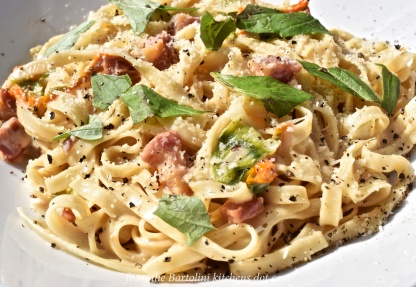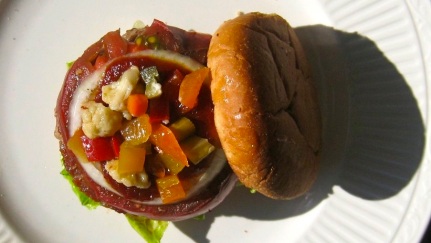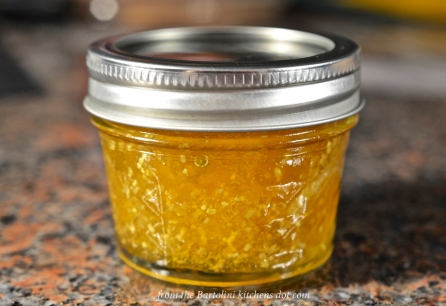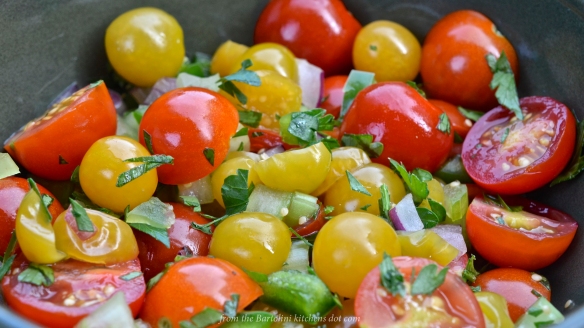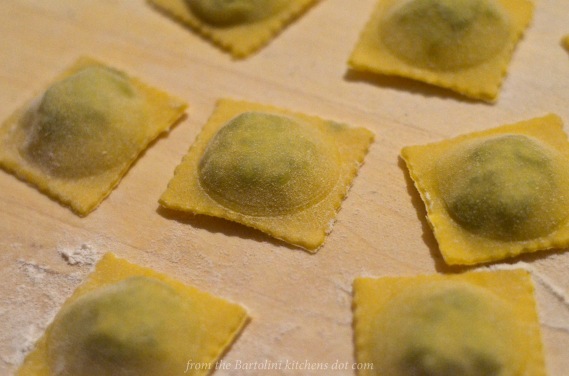I know. I know. I was supposed to share my cousin’s meatball recipe and I had every intention of doing so — and then I looked at the calendar. Forgive me, Giuseppe, but I forgot your feast day.
* * *
* * *
For those not familiar, some believe that St. Joseph’s intervention brought drought relief to Sicily during the Middle Ages, thus preventing widespread famine. In appreciation, the faithful vowed to prepare a large banquet in his honor and to forever commemorate his Feast Day. Over the years, St. Joseph was named the Patron Saint of towns and villages throughout Sicily and the Italian peninsula, and his Feast Day became Fathers Day in Italy.Today, March 19th, is cause for celebration with parades on both sides of the Atlantic That feast has evolved into the current day St. Joseph’s Table tradition in which the faithful bring a variety of foods and sweets to their parish churches. This is one potluck you don’t want to miss! Any money collected during the celebrations is donated to the area’s needy.
Still interested? Here’s a more thorough description of the St. Joseph’s Table.
I’m sure you will understand if I postpone the meatball post one last time. After all, I’ve a virtual platter to prepare!
* * *
You can’t have a proper celebration without music. As one of the many kids attending any number of weddings, we all sat mesmerized as our parents circled the dance floor again and again, each pass a little faster, as this music’s tempo increased. Chicken dance? Ha! Hope your toes are in tapping condition.
* * *
* * *
Now, I must admit to initially drawing a blank when I attempted to think of recipes worthy of this illustrious Saint. The Bartolini recipe file is pretty much depleted of all dishes once served on festive occasions. What to do? What to do?
And then, an epiphany! (Considering the Saint, an epiphany sounds about right.) A number of years ago, my good friend, formerly known as my “Traveling Companion”, attended a family gathering and today’s dish, Cannoli Cream and Chips, was served. I could not believe my ears as he described the dish. Why hadn’t I thought of this?
* * *
* * *
Not very much later, I was invited to join him when he next visited his family. Before going further, let me talk about that family. When I first visited, walking over the threshold was like walking back in Time to the Bartolini family gatherings in the old two-flat. A welcoming cocktail and friendly conversation to be followed by a wonderful dinner with, of course, a platter of pasta the table centerpiece. His family welcomed me as one of their own and that evening remains a very special memory for me.
A few months after he described the wondrous confection, I was again invited to join him when he visited these good people. It was warmer this visit and we all gathered in what I believe was the sunroom. There, in the center of the table, was what I now consider the Holy Grail of Nibbles: a bowl of cannoli cream surrounded by chips made from broken cannoli tubes. Yes, you read that correctly, cannoli cream and chips!!!! In my mind, “chips and dip” would never mean the same thing again.
Since that fateful day, I’ve learned that our dear hostess found this wonderful appetizer at one of the area’s groceries. Once I heard that, I went shopping and, yes, I, too, found them. In fact, they can be found in this store’s pastry department for just about any holiday. To be honest, I’ve never bought them. Where’s the fun in that? I’ve got time and a Kitchen Aid stand mixer. Let me at it!
I’m about to share recipes for both the cannoli cream and the chips. Truth be told, recipes aren’t the focus of this posting. It’s the way they’re served. So, if you’ve a favorite cannoli cream recipe, by all means use it. The same is true for the tubes. This post is about serving an old favorite in a new way.
* * *
* * *
Cannoli Cream and Chips Recipe
Ingredients
for the cream (see Notes)
- 1/2 cup heavy cream
- 2 cups (17.5 oz, 500 g) ricotta, well-drained (see Notes)
- 1/2 cup powdered/confectioners sugar
- 1/2 tsp vanilla
- 1/4 tsp cinnamon
- 3 oz (84 g) semi-sweet chocolate – chips, chopped, or grated
- chopped pistachios and/or grated chocolate, for garnish (optional)
for the chips
- 2 cups all-purpose flour
- 1 tbsp sugar
- pinch salt
- 2 tbsp butter, chilled and cut into pieced
- 1/4 dry white wine
- 1 egg, slightly beaten
- powdered/confectioners sugar, optional
Directions
* * *
for the cream (see Notes)
- Whip the cream until stiff peaks form. Set aside.
- In another bowl, whisk the ricotta until smooth.
- Slowly add the sugar while continuing to whisk.
- Add the vanilla and cinnamon and whisk until well blended.
- Add the chocolate and carefully stir.
- Gently fold the whipped cream into the ricotta mixture. Cover and refrigerate for at least 1 hour before serving.
- Cannoli cream should be kept refrigerated and used within 2 days.
for the chips (see Notes)
- Before beginning, consider buying cannoli shells from the nearest Italian bakery. Once home, break the shells into pieces and serve. No muss, no fuss, and no panful of oil to discard. However, if you must …
- Sift together the flour, sugar, and salt.
- Add the pieces of butter and combine with the flour using your hands until the mixture resembles gravel.
- It’s not too late to change your mind and buy some cannoli shells.
- Add the egg and mix well.
- Add the wine, a teaspoon at a time, and knead to create the dough.
- Once a smooth dough is achieved, flatten it, wrap in plastic and refrigerate for no less than 15 minutes.
- When chilled, take a section of the dough, and roll until smooth and about the thickness of pasta. (See Notes)
- Use a pastry cutter to cut the dough into chip-sized pieces.
- Place oil for frying into a frypan to about a depth of 1/2 inch (1.25 cm).
- Preheat oil to 360˚ F (180˚ C)
- Place several pieces of dough into the hot oil and fry until golden. Flip to cook the other side. The chips should take no more than 3 minutes to completely fry. (See Notes)
- Use a slotted spoon to remove the chips and drain on paper towels.
- Cooled chips should be stored in an airtight container where they will keep for about one week.
- To serve, place on a platter within reach of the cannoli cream, and sprinkle with powdered sugar, if desired.
* * *
Notes
This is the time to make your own ricotta. It’s easy to do and the reward is a cheese that is far superior to any that you might find at your local grocery. Click HERE to see how I make my ricotta.
If you like, citrus zest and/or chopped candied fruit can be added to the cream for Sicilian-style cannoli cream.
For chocolate cannoli cream, add 3 to 4 teaspoons unsweetened cocoa powder to the ricotta in place of, or in addition to, the cinnamon.
If you are rolling pin-challenged like I am, grab your pasta machine and let the machine do the work for you.
 A warning for all March Madness fans. Do not attempt to fry these chips when a local underdog (Loyola) makes its first appearance at the Big Dance in over 30 years. Worse, if the team is tied going into the closing minutes, turn off the stove and go watch the game. Well, a picture really is worth a thousand words.
A warning for all March Madness fans. Do not attempt to fry these chips when a local underdog (Loyola) makes its first appearance at the Big Dance in over 30 years. Worse, if the team is tied going into the closing minutes, turn off the stove and go watch the game. Well, a picture really is worth a thousand words.
ETA: Loyola played again on Saturday night and won!!! They now advance to the next round, the Sweet 16, and will play again on Thursday. Go Ramblers!
* * *
It’s déjà vu all over again
This is a holiday so why not take another look at one of the Bartolini all-time favorite dishes, Zia’s Baked Calamari?. It’s a family classic and one that’s sure to bring a smile to any Bartolini whenever it’s mentioned. You can read all about it HERE.
* * *
Coming soon to a monitor near you …
 Marinella’s Meatballs (The lengths some will go to get one of those meatballs!)
Marinella’s Meatballs (The lengths some will go to get one of those meatballs!)
* * *





























